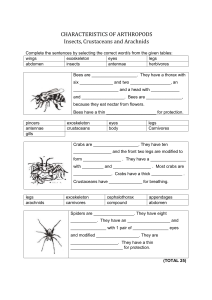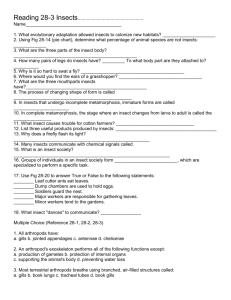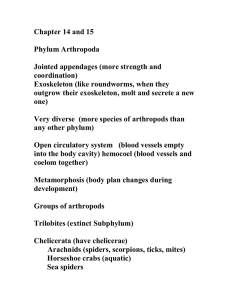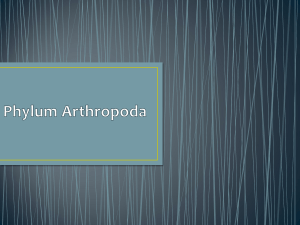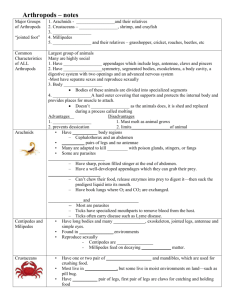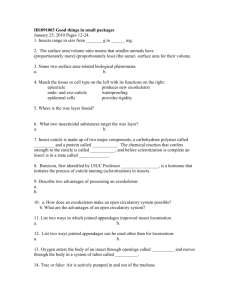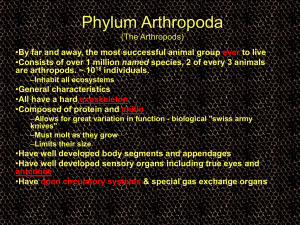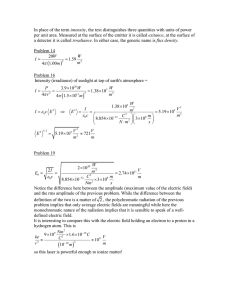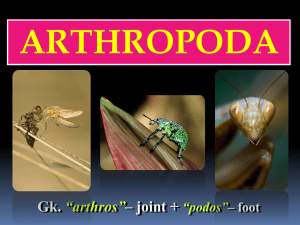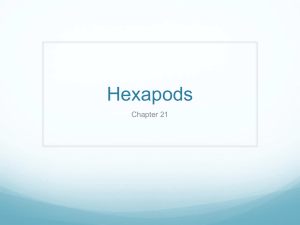Arthropod Worksheet: Arachnids, Insects, Crustaceans
advertisement
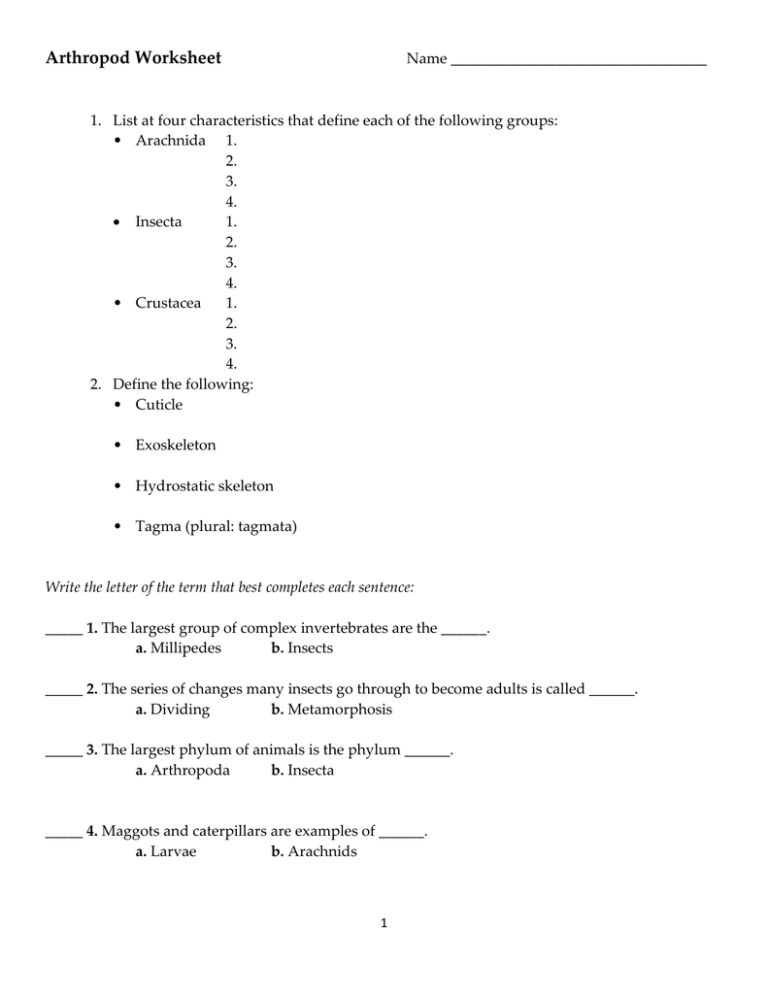
Arthropod Worksheet Name __________________________________ 1. List at four characteristics that define each of the following groups: • Arachnida 1. 2. 3. 4. Insecta 1. 2. 3. 4. • Crustacea 1. 2. 3. 4. 2. Define the following: • Cuticle • Exoskeleton • Hydrostatic skeleton • Tagma (plural: tagmata) Write the letter of the term that best completes each sentence: _____ 1. The largest group of complex invertebrates are the ______. a. Millipedes b. Insects _____ 2. The series of changes many insects go through to become adults is called ______. a. Dividing b. Metamorphosis _____ 3. The largest phylum of animals is the phylum ______. a. Arthropoda b. Insecta _____ 4. Maggots and caterpillars are examples of ______. a. Larvae b. Arachnids 1 _____ 5. Spiders and ticks are examples of ______. a. Insects b. Arachnids _____ 6. From time to time, an arthropod will shed its ______. a. Thorax b. Exoskeleton _____ 7. Lobsters and shrimp are examples of ______. a. Crustaceans b. Chitin _____ 8. Structures that grow from the body are called ______. a. Abdomen b. Appendages _____ 9. The openings in a spider’s abdomen that allow movement of oxygen and carbon dioxide into and out of the book lungs are called ______ . a. Spiracles b. Swimmerets _____ 10. Animals that look like worms but have legs include centipedes and ______. a. Insects b. Millipedes _____ 11. Insects have ______ body regions. a. Three b. Two _____ 12. The process of replacing an exoskeleton is called ______. a. Molting b. Reproducing _____ 13. The jaws of crustaceans are called ______. a. Appendages b. Mandibles _____ 14. The arthropods with eight legs are the ______. a. Insects b. Arachnids Chapter 14 2
